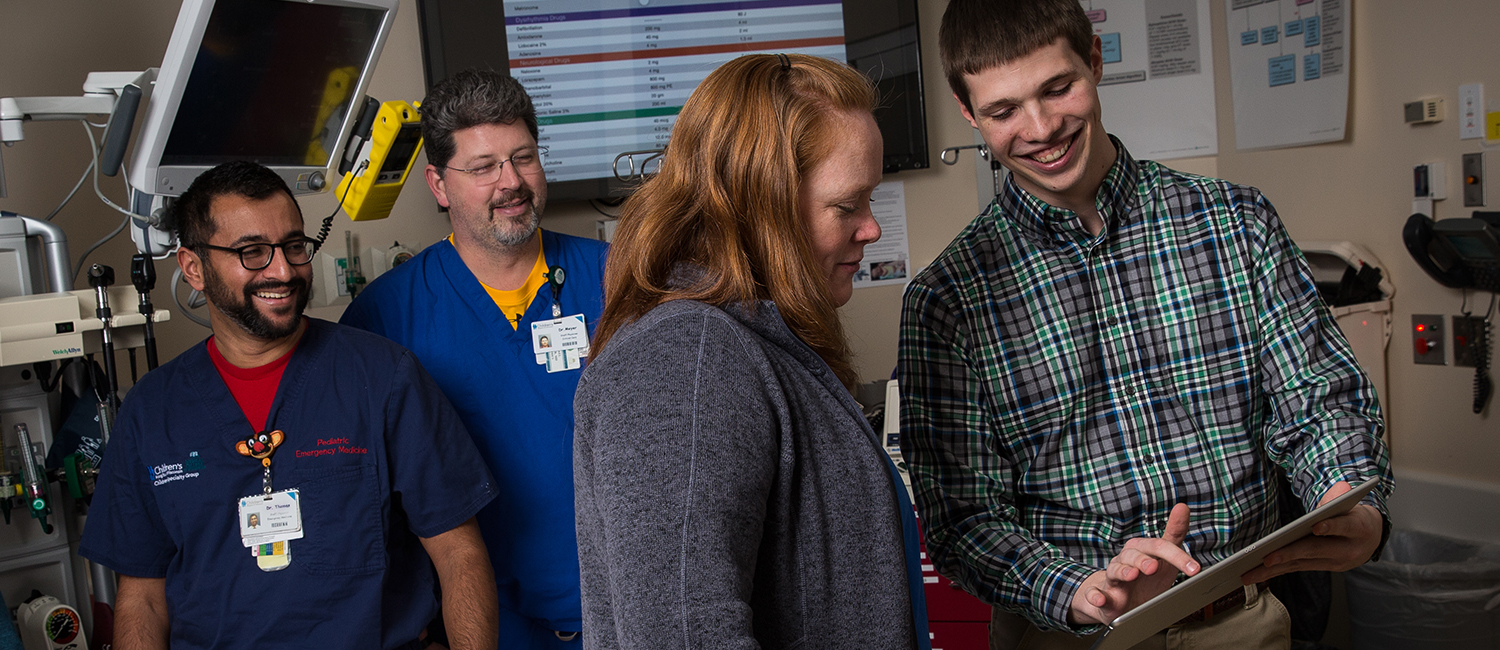
Saving time, saving lives
UWM’s App Brewery teams with Children’s Hospital to help physicians during pediatric emergencies.
Paramedics rush a 6-year-old boy into the Children’s Hospital of Wisconsin emergency department. His heart has stopped. Doctors have precious minutes to act. He needs an epinephrine injection, but the dosage must be precisely tuned to his age and weight.
In seconds, a doctor enters the boy’s age into a smartphone app, which displays the exact dosage. It’s administered, the boy’s heart rate returns, and the crisis subsides in minutes.
The doctor used the First Five Minutes app, launched by UWM’s App Brewery, the Medical College of Wisconsin and Children’s Hospital. Whereas physicians once relied on imperfect memory or time-consuming books of charts for dosing information, the new app quickly calculates it for patients ranging from 5-pound newborns to 150-pound 18-year-olds.
UWM students at the Brewery develop smartphone apps for nonprofits, research groups and the private sector. “It’s a learning atmosphere,” says student developer Evan Timmermann, who worked on First Five Minutes. “We learn new skills and grow in the technological and marketing side of computer science.”
Dr. Amy Drendel, who works in the emergency department at Children’s, devised the app with two other pediatricians and a pediatric nurse. They approached the App Brewery to make it a reality.
Because Children’s is a teaching hospital, medical expertise ranges from student physicians to tenured professionals. Experienced doctors would often calculate dosages from memory, while newer staff consulted thick flip-books of charts, cross-referencing patient information with medications and punching buttons on a calculator. Meanwhile, seconds ticked away for patients.
The app is a streamlined, digital copy of that book, and automatically does calculations and conversions. It requires only two clicks to enter and confirm a patient’s age or weight, saving time and reducing the potential for error. The app produces one table with all of the patient’s standardized information.
“Doctors started using the app in the emergency department resuscitation area, and it took off,” Drendel says. Children’s now projects the app onto a screen in the resuscitation room so that all staff members see the same information.
“It’s simple, but it saves lives. I take pride in that,” Timmermann says. “It’s something that you don’t think a computer science major really does, especially as a student. It opened up my eyes to how the technological field can really help improve the medical field.”